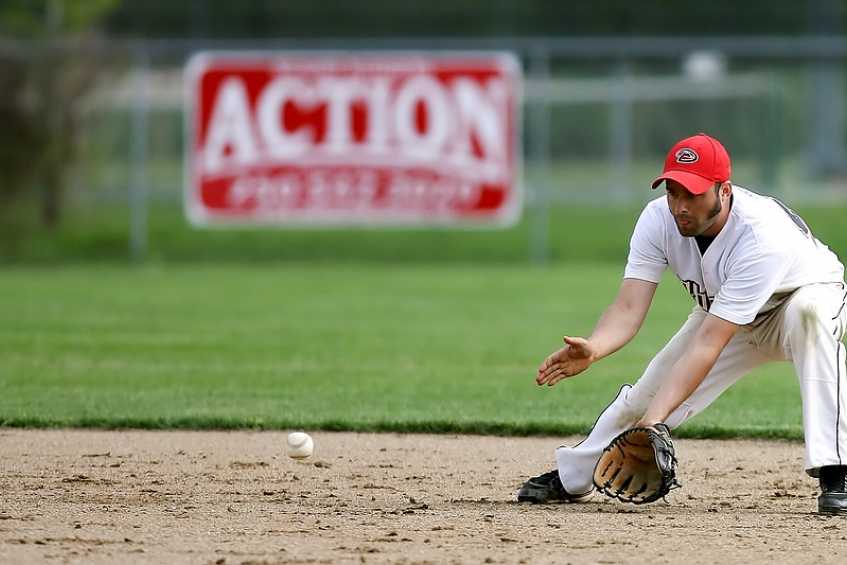
The first key to successful tee ball coaching is taking a couple of Advil and buying a large dose of patience, but that would be the easy answer. Personally, I enjoy working with tee ball players as much or more than other age groups. I love the challenge of working with that aged player because of the opportunity to hook a young athlete for life on the game of baseball. Of course, this is not easy because by its nature, baseball involves more standing around and inactivity than other sports, with soccer being a prime example of a higher activity sport. The often inactivity of baseball is an obvious challenge for all youth baseball coaches and especially for easily bored and distracted players of tee ball age.
The good news is that hitting the ball, catching the ball, throwing the ball and running the bases provides a thrill, unmatched in other sports. To see the joy in a young tee ball player's eyes when they accomplish one of these for the first time is as exhilarating for me, as it is for them, and why I love tee ball coaching.
Of course, many adults do not have the patience to work with sport beginners. A great amount of patience is obviously necessary.The good news is thatkids of the tee ball age have a ton of energy and they love to run around to expend that energy. With that in mind, it is important that T-ball coaches learn ways of making practice energy-packed, so kids do not experience the boredom that is sometimes associated with baseball. Using practice time wisely is a necessity when dealing with such young players.
Of course, tee ball coaches have the responsibilityof knowing the basics of baseball. Learning a few basics of the correct ways to catch, field, throw, and hit isnecessary to coach tee ball players. Not only is the knowledge of these basics important, but also learning ways of teaching these basics is equally important. Leagues have the responsibility of providing coaches with pre-season coaching training, coaching resources and with on-going training in the fundamentals of baseball. Additionally, leagues should provide coaching training on how to deal with players of that age as well as dealing with parents.
Coaches should:
1. Have a first aid kit with them at all times with an emphasis on "at all times."
2. Use other parents (coaches) for help so players can work in small groups (stations), which will keep them in the aforementioned active mode.
3. Remember the K.I.S.S. method - keep it simple, stupid - extended talks and explanations are unnecessary in tee ball. Demonstrations and pictures are always a good teaching method.
4. Give homework and explain to players and parents exactly what they can be doing between practices. Seeing improvement is easier when kids practice at home, too.
5. Keep games moving at a good pace, watch for bored players, and get them involved whenever possible. Teaching players what to do on batted balls, how to cover bases, and how to back up plays is important. Of course, this is one advantage of T-ball because the ball is put in play more often than with coach or kid pitch.
6. Point out any little improvement in players. For example, making a big deal of players even catching balls at this age is good and can help spur players' confidence.
7. Have little contests where all players have a chance of winning. Contests can draw greater interest in kids while working on baseball skills.
8. Assume nothing and take nothing for granted because teaching the little things like where each position is located and where players position themselves at each position is often necessary.
9. Know where to properly place the batting teeso hitters are hitting the ball out front and not even with their body. Moving the height of the teeeach time up is always a good idea so hitters learn to adjust and hit different pitch locations. This may seem like a given but many coaches fail to set the tee in the correct hitting position.
10. Teach basic base running, and especially when to run, and not run,on batted balls. This is a constant chore and a big challenge for the tee ball coach, too.
11. Use as soft a ball as possible, especially in practice,so kids can avoid the pain that being hit by hard balls create. Eliminating fear of the ball is crucial to player's development and desire to keep playing baseball.
Finally, like coaching at any level, the key to a good tee ball coach is measured in two ways. One, does each player have the desire to play baseball the following season and two, has each player improved their skills during the season. Tee ball coaches, who can answer yes to both of these, have done a tremendous coaching job.
After playing major league baseball, Jack Perconte has taught baseball and softball since 1988 and offered valuable coaching training too. He has helped numerous youth players reach their potential, as well as having helped parents and coaches navigate their way through the challenging world of youth sports. Jack is one of the leading authorities in the areas of youth baseball training and coaching training advice.
All Jack Perconte articles are used with copyright permission.There are 0 comments on "Tee Ball Coaching - Be a Great Coach for Young Ballplayers"
chandler allen says:
"Hi my name is chandler, i’ve enjoyed..."
On Wanting to tryout for summer ball. as an 18 year old
david graham says:
"With no current MLB team in Canada,..."
On With no current MLB team in
Charles Chavez says:
"To All Coaches: Do you have13U or..."
On Looking for Games